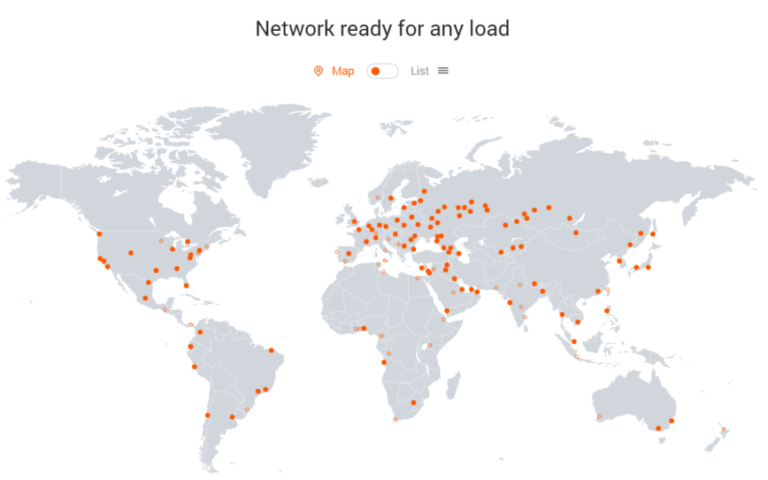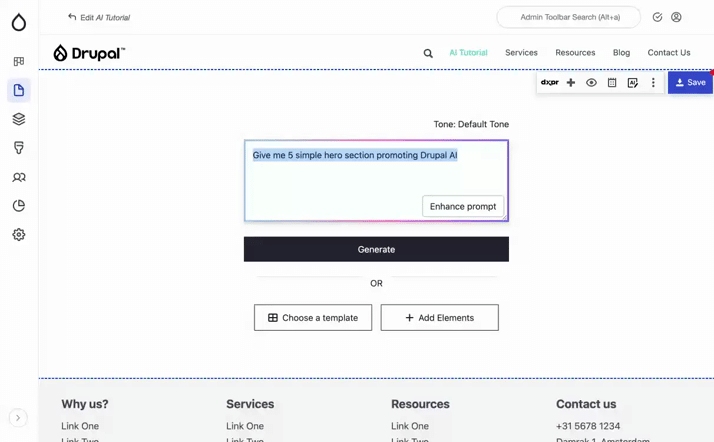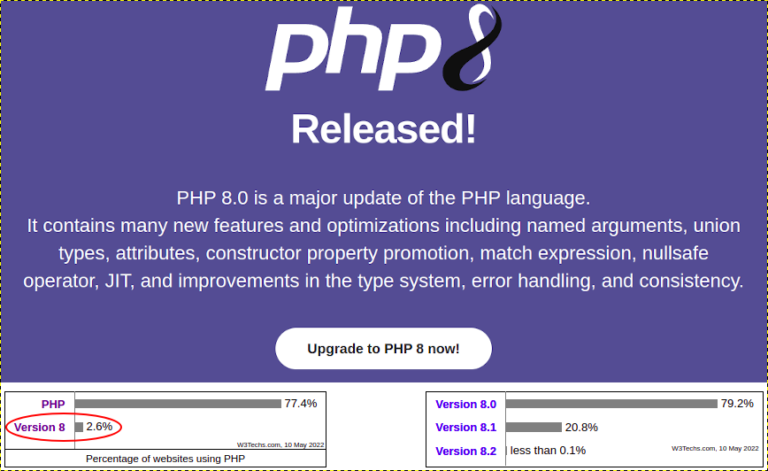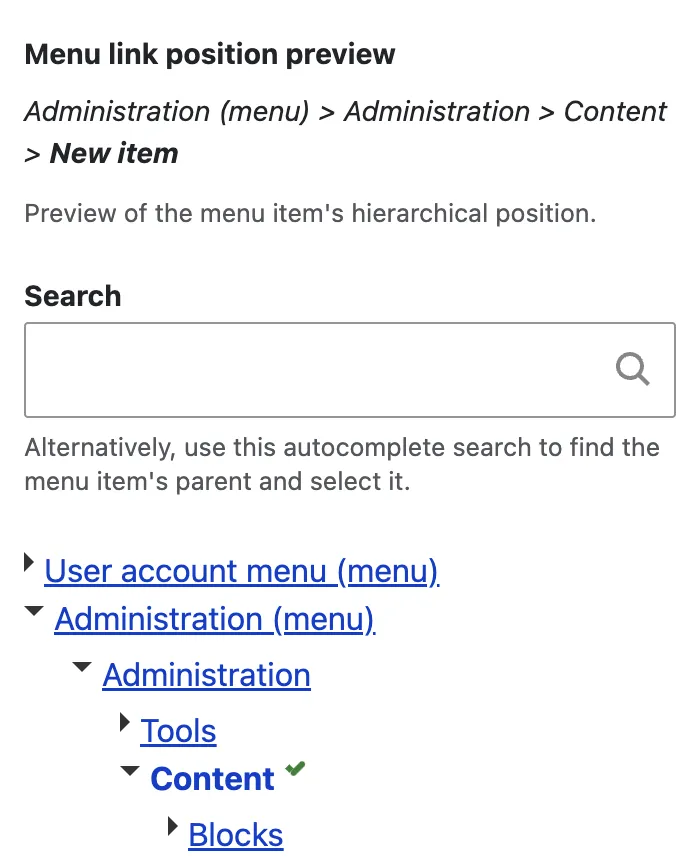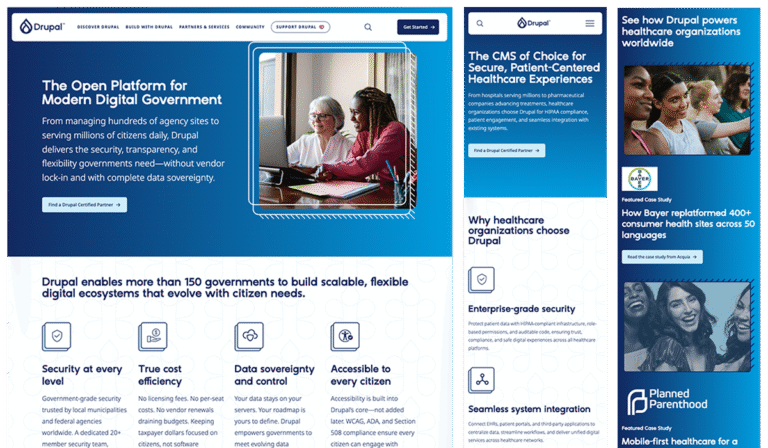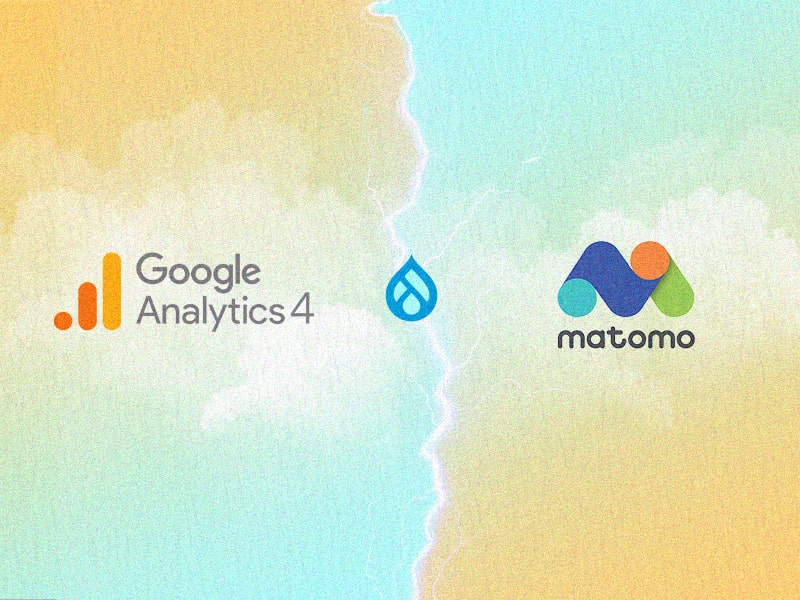
Optimize your websites, apps, and marketing campaigns by running A/B tests:
Both Matomo and Google Analytics 4 (GA4) are prominent web analytics platforms that provide valuable insights into website performance and user behavior. However, they differ significantly in features, user experience, data control, and pricing. Here’s a detailed comparison to help you choose the right tool for your needs.
Here are some details about the challenges faced.
Measure the performance of your marketing campaigns and analyze search engine traffic. Track conversions, understand user journeys, and optimize your marketing efforts based on insights into how visitors find and interact with your site.
Matomo: Supports importing historical data from Universal Analytics, allowing users to maintain continuity in their analytics without losing past insights.
GA4: Does not allow importing historical data from Universal Analytics, which means users starting with GA4 will not have access to their previous data, potentially complicating year-over-year comparisons.
Why we made the switch: Google Analytics 4 & its complexities
Matomo is a potent open-source web analytics platform that prioritizes data ownership and privacy. In contrast to a lot of popular analytics tools, Matomo gives you total control over your data by letting you host it on your own servers or in the cloud. A wide range of features is available with Matomo, which is well-known for its adaptability and customization.
Identify where your visitors are coming from with Matomo’s Geolocation feature. Use geographic data to tailor your marketing efforts and content strategy based on insights into regional user behavior and preferences.
Understanding the new data model
- Event-based tracking: Unlike Universal Analytics, which relied heavily on a session-based data model, GA4 uses an event-based approach. This means that every interaction, from page views to clicks, is treated as an event. While the event-based approach provides more granular data, it also requires a paradigm shift in how reporting is approached, by mapping the new events to the metrics & dimensions.
- Custom parameters: GA4 encourages using custom parameters for events, but setting these up is more complex than UA’s straightforward event tracking. The lack of pre-defined event categories, actions, and labels means investing time in defining and standardizing the parameters.
Navigating the interface
- Learning curve: GA4’s interface is markedly different from UA. While it’s designed to be more flexible, it is less intuitive. Features easily accessible in UA, like certain reports and metrics, are now buried deeper in the UI or have been renamed, leading to frustration and additional time spent searching for information.
- Exploration reports: GA4 introduces Exploration Reports, which offer powerful custom reporting capabilities. However, the flexibility comes with complexity. It takes a considerable amount of time to learn how to effectively use these reports, especially in understanding how to apply filters, segments, and comparisons to get the data I needed.
Changes in key metrics
- New definitions: Some important metrics from Universal Analytics have been redefined or replaced (e.g. engagement rate in GA4). While these changes are aimed at providing a more holistic view of user interaction, they make it difficult to compare data with historical reports from UA. Understanding these new metrics and how they align with business goals is a significant challenge.
- Conversion tracking: Setting up conversions in GA4 is fundamentally different from UA. The process now involves defining events and marking them as conversions, which is more flexible but also more prone to errors. Misconfigured events lead to discrepancies in conversion data, making it challenging to trust the reports.
Limited pre-built reports
- Fewer default reports: GA4 comes with fewer pre-built reports compared to UA. This is a double-edged sword; while it forces customization to better align with business goals, it also means more time spent creating and configuring reports that were readily available in UA.
- Audience segmentation: The segmentation features in GA4 are more advanced but also more complex to set up. Building audience segments requires a deep understanding of user behavior and event parameters, thus making it hard to create meaningful insights.
Attribution modeling
- Changes in attribution: GA4 offers more sophisticated attribution models, including data-driven attribution, which is a significant improvement. However, the challenge lies in understanding these models and how they differ from UA’s last-click attribution. The shift requires a reevaluation of marketing strategies and reporting to reflect the new attribution data accurately.
Matomo: An Open-Source, Privacy-Centric alternative for web analytics
Matomo: Known for its intuitive and user-friendly interface, Matomo is rated highly for ease of use. Users can quickly navigate the platform and access insights without extensive training.
GA4: While it features a modern design, many users find the interface complex and challenging to navigate, especially those accustomed to previous versions of Google Analytics. It requires a steeper learning curve to fully leverage its capabilities.
Get your website to the top with our specialized Drupal SEO services. And guess what? Your first SEO audit is on us—completely FREE!
Setting up Matomo in Drupal
In Drupal, setting up Matomo is a simple process. Matomo’s privacy-focused analytics can be set up in two ways. You can choose to host the Matomo analytics on your server or set it up as a cloud-based analytics platform. You can find more details on the pricing here.
Improve form conversions by analyzing where and when visitors abandon your forms:
Install Matomo on your server
- Download Matomo: Visit the official Matomo website and download the latest version of the software.
- Upload to your server: Use FTP or another file transfer method to upload the Matomo files to your web server. Typically, this will be in a subdirectory of your domain, like `yourdomain.com/matomo`.
- Run the Installer: Access the directory in your web browser to start the installation process. Follow the on-screen instructions to set up the database and complete the installation.
Install the Matomo module in Drupal
- Download the Module: Go to the Drupal Matomo module page and download the module. You can also install it directly via Drupal’s admin interface by searching for “Matomo.”
- Enable the Module: Once installed, navigate to `Extend` in the Drupal admin menu, find Matomo, and enable it.
Configure the Matomo module
- Access Configuration: Go to `Configuration > Matomo` in your Drupal admin menu.
- Enter Matomo URL: Provide the URL where your Matomo installation is hosted. This could be something like `https://yourdomain.com/matomo/`.
- Site ID: In Matomo, every tracked website is assigned a unique Site ID. You can find this ID in your Matomo dashboard under `Administration > Websites`. Enter this ID in the corresponding field in the Drupal configuration.
- Matomo Token: You’ll also need to enter your Matomo API token, which you can find in your Matomo user profile under `API`. This token allows Drupal to communicate securely with your Matomo installation.
Gain valuable insights into user behavior with Matomo’s Heatmap Analytics and Session Recording features:
Create custom dimensions to track additional data specific to your business needs. Matomo’s Custom Dimensions feature allows you to customize your analytics setup to gain deeper insights into user behavior and enhance your data analysis capabilities.
Matomo’s data insights features
These include advanced analytics tools like heatmaps and session recordings, real-time visitor tracking, and customizable dashboards. It offers a strong and intuitive substitute for systems such as Google Analytics, particularly for individuals who value customized insights and data privacy.
Customizable dashboards and all websites dashboard
After years of leaning on Universal Analytics (UA), its intuitive interface, familiar metrics, and straightforward reporting made it an indispensable tool for us at Specbee and for digital marketers everywhere. However, with Google’s shift to GA4, we were left grappling with a steep learning curve and several challenges, particularly in reporting.
Real-time data updates
Here is a quick guide on how we to set up Matomo on your server:
Analytics for ecommerce and goal conversion tracking
We can help if you’re having trouble adjusting to GA4’s new data model, finding it hard to work with its interface, or searching for a platform that offers you more control over your data. But hey, don’t skip—read the whole article first!
Event tracking and Content tracking
Analyze the most popular paths users take through your website or app with User Flow:
Custom dimensions
Matomo: Offers customizable reports and a variety of analytics tools, including conversion tracking and A/B testing. Users can easily create dashboards that reflect their specific needs.
GA4: Provides advanced reporting features, including custom reports and data visualization tools. However, its reliance on machine learning can sometimes obscure direct insights, making it less straightforward for some users.
Geolocation
Create custom reports tailored to your needs to gain new insights and save time:
User segmentation
Get insights into your paid ads, including Google Ads, Microsoft Bing Ads, and Yandex Ads, with better privacy and simplified implementation:
Pages transitions and Page overlay
Visualize how users navigate through your website. Pages Transitions and Page Overlay help you identify common paths, drop-off points, and popular routes, enabling you to optimize site structure and improve user experience.
Analytics campaign tracking and Track traffic from search engines
Matomo: Offers full data ownership, allowing businesses to ensure compliance with privacy regulations like GDPR. Users can choose where their data is stored, which is a significant advantage for organizations concerned about data privacy.
GA4: Data is stored on Google’s servers, which can raise concerns about data privacy and sharing. While GA4 provides robust analytics capabilities, it may not offer the same level of control over data as Matomo.
No data limit
Monitor your online store’s performance and track specific goals. Matomo allows you to analyze product views, purchases, revenue, and conversion rates to optimize your e-commerce strategy and measure the success of your marketing efforts.
Other powerful features
- Annotations allow you to add notes to your analytics data, providing context for significant events and changes, which aids in better data analysis.
- Scheduled Email Reports keep you informed by delivering customized, automated reports with key metrics directly to your inbox, making it easy to share insights with stakeholders.
- Site Search Analytics lets you track and analyze user search queries, helping you identify content gaps and optimize your site’s search functionality.
- Visits Log and Visitor Profile offers detailed insights into individual user behavior, visit history, and preferences, enabling personalized marketing and a better user experience.
Matomo’s premium features
Matomo: Offers both free and paid options, with the free version requiring self-hosting, which may incur additional costs. The paid version is generally more affordable than GA4’s premium offerings, making it a cost-effective choice for many businesses.
GA4: The free version is powerful but comes with limitations, such as a 14-month data retention policy. The paid version can be expensive, particularly for larger organizations that require extensive data analysis capabilities.
Heatmap analytics and Session recording
In this blog, we’ll break down the complexities of GA4 and tell you why we moved, explore the challenges of moving from UA, and introduce Matomo as a powerful alternative that might solve your analytics headaches.
- Heatmaps: Visual displays of user interactions, helping identify engaging areas and usability issues.
- Scroll Maps: Understand how far users scroll down a page.
- Click Maps: See where users are clicking most often.
- Session Recording: Capture all visitor activities, including clicks, mouse movements, scrolls, window resizes, page changes, and form interactions. Replay these interactions in video format to see exactly how visitors engage with your site and use these insights to improve user experience and troubleshoot issues.
A/B testing platform
Enjoy unlimited data storage with Matomo. Analyze extensive datasets without worrying about data limits, ensuring comprehensive insights into your website performance and the ability to track historical data over long periods.
- Experiment with different versions of your pages.
- Determine which performs best to increase conversions.
- Make data-driven decisions to enhance performance, ensuring that your changes lead to improved user engagement and higher conversion rates.
Custom reports
You can also add advanced configurations like heatmaps, session recordings, and more, depending on your requirements.
- Pull out the exact information you require for success.
- Reduce the risk of human error.
- Generate new reports quickly, streamlining your data analysis process and allowing you to focus on the metrics that matter most to your business.
Form analytics
Create dashboards tailored to your needs and manage multiple websites from a single interface. Arrange widgets, select metrics, and monitor performance across all your sites efficiently, ensuring you have quick access to the insights that matter most.
- Gain insights into user interactions with your forms.
- Identify and fix issues that prevent successful submissions.
- Optimize your forms to enhance user experience and increase conversion rates.
Visualize conversion funnels
Even with GA4’s advanced features, the steep learning curve and changes to key functions have left marketers searching for alternatives that offer both power and ease of use. Enter Matomo—a customizable analytics platform that prioritizes privacy and addresses many of the pain points GA4 users face.
- Identify bottlenecks in the user journey.
- Optimize your site to improve conversion rates.
- Make informed decisions to enhance the user experience and drive more conversions.
User flow
Matomo’s premium features offer deep insights, extensive customization, and advanced tools for confident data-driven decisions. Learn how these features, from heatmaps and session recordings to A/B testing and funnel analysis, can enhance your analytics capabilities.
- Visual representation helps you understand user behavior.
- Identify common exit points and optimize navigation.
- Gain insights into how users interact with your site to improve their experience.
Multi-channel conversion attribution
Segment your audience based on various criteria to gain a deeper understanding of different user groups. Analyze behavior, engagement, and conversion rates for each segment, allowing for targeted marketing strategies and personalized user experiences.
- Clarity on how much credit each referrer deserves.
- Allocate marketing efforts and budgets more effectively.
- Optimize your marketing strategy to drive better results.
Advertising conversion export
Previously known as Piwik, Matomo provides a powerful, privacy-centric alternative to mainstream analytics tools like Google Analytics. Let’s dive into the key features that make Matomo a top choice for businesses and developers.
- Integrates with these platforms, providing comprehensive data without needing third-party tracking codes.
- Saves implementation time and ensures that your advertising data is accurate and privacy-compliant.
Other advanced tools
- Media Analytics helps you track and optimize video and audio engagement by monitoring views, play duration, and interactions.
- SEO Web Vitals enhances your website’s performance and search ranking by identifying and addressing key SEO issues, ensuring a seamless user experience.
- Roll-Up Reporting saves time by aggregating data from multiple websites and apps, offering a holistic view of your digital properties.
- User Cohorts allow you to analyze and compare the behavior of different user groups, enabling you to boost retention and satisfaction.
Matomo VS GA4
With GA4’s event-based tracking, redefined metrics, and a less intuitive interface, many marketers are struggling to navigate this new, less familiar landscape.
Data ownership and privacy
Understand the contribution of each marketing channel to your conversions:
Historical data import
Monitor interactions with specific elements and content on your website. Track button clicks, video plays, and downloads to understand user engagement and improve content effectiveness. These features provide granular insights into how users interact with your content.
User interface and usability
Track visitor activity on your website as it happens. Matomo’s real-time data updates provide immediate insights into traffic trends, user behavior, and engagement, allowing for quick decision-making and responsive action.
Reporting and insights
For years, digital marketers have loved Universal Analytics (UA) for its simplicity. It made tracking website performance easy. But then came Google Analytics 4 (GA4). Now, things are more complicated.
Pricing
Choosing between Matomo and GA4 ultimately depends on your organization’s specific needs and priorities. If data ownership, privacy, and ease of use are paramount, Matomo is likely the better choice. Conversely, if you require advanced machine learning features and seamless integration with Google products, GA4 may be more suitable. Both platforms have their strengths and weaknesses, and understanding these can help you make an informed decision that aligns with your analytics goals. With experience working extensively with GA4 and Matomo, we’re ready to help you improve your web analytics and SEO experience. Learn more about our Drupal SEO services and get in touch with us today!
Final thoughts
Understand where visitors drop off in your conversion funnels to increase conversions, sales, and revenue with your existing traffic:

